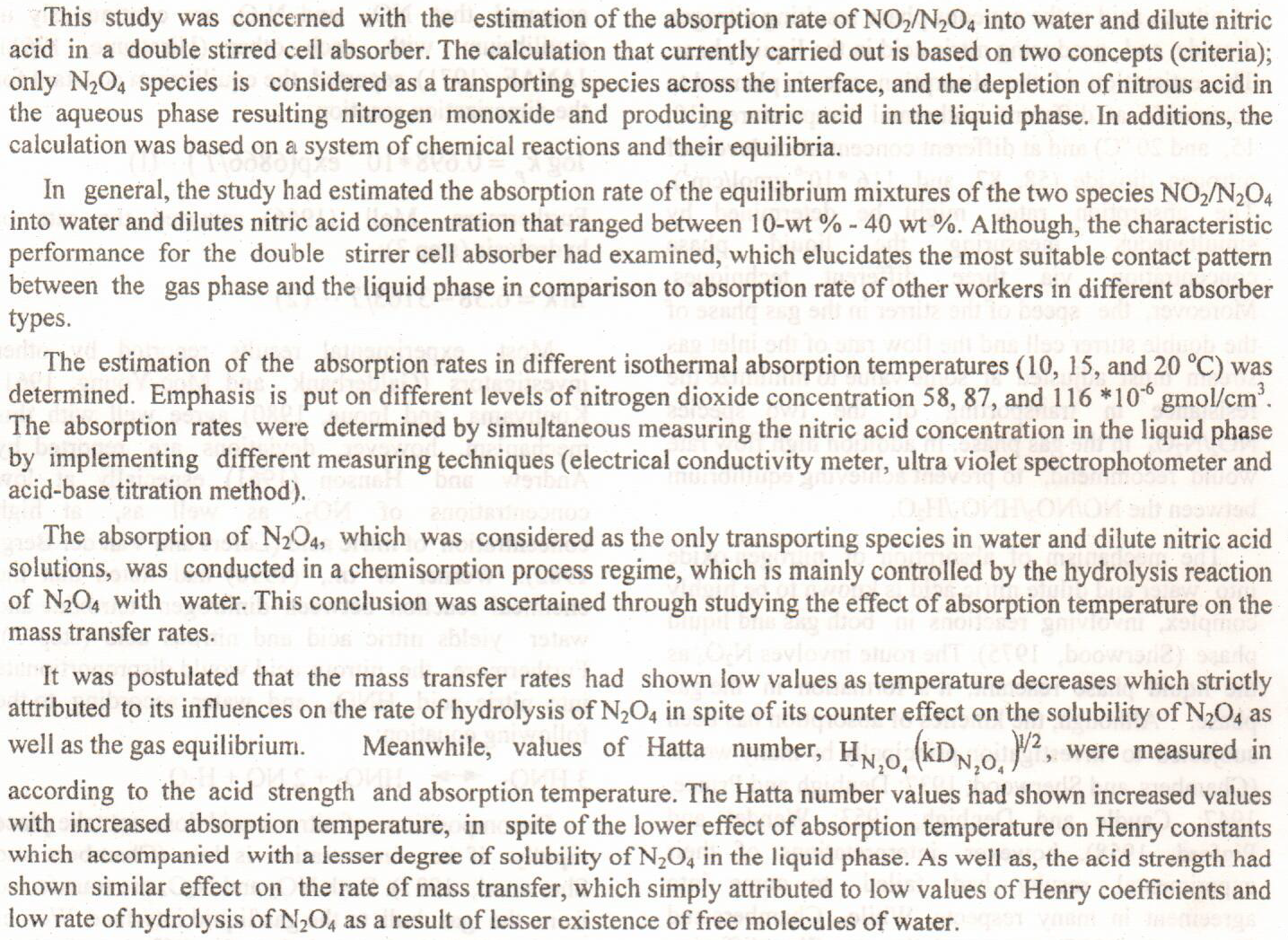
The current research aims to test the effect of knowledge sharing in its dimensions represented by(individual dimension, organizational dimension, and technological dimension), In reducing the strategic Anxiety of Iraqi Airways, In view of the importance of the two variables for the company from the perspective of society and the sample resulting from directing various organizational phenomena to reduce its strategic Anxiety, As a goal, it should be viewed from multifaceted perspectives(uncertainty, relational disorder, competitive disorder, resource depletion), And it was embodied by choosing the descriptive, exploratory approach, as it is the most appropriate in that aspect, so that the research questionnaire is one of solid scientific
... Show MoreThe consumption of fossil fuels has caused many challenges, including environmental and climate damage, global warming, and rising energy costs, which has prompted seeking to substitute other alternative sources. The current study explored the microwave pyrolysis of Albizia branches to assess its potential to produce all forms of fuel (solid, liquid, gas), time savings, and effective thermal heat transfer. The impact of the critical parameters on the quantity and quality of the biofuel generation, including time, power levels, biomass weight, and particle size, were investigated. The results revealed that the best bio-oil production was 76% at a power level of 450 W and 20 g of biomass. Additionally, low power levels led to enhanced
... Show More (10)
(10)
 (3)
(3)
This research aims to harmonize contemporary and traditional clothes, also expenses and savings. It is done by recycling evening clothes into Clothes with traditional features. The study followed descriptive explanatory approach. The sample consisted of seven dresses, as well as 208 female participants from Makkah Al-Mukarramah province, the age range was between 21 and 65 years old. An electronic questionnaire was distributed and the stability and reliability of the internal consistency were measured.
The research resulted in the ability to recycle evening dresses into modern clothes with traditional characteristics. It also confirmed that the reason of wearing traditional clothes is spirituality of the month of Ramadan. Addi
 (36)
(36)
Taguchi experimental design (TED) is applied to find the optimum effectiveness of aqueous Red Pomegranate Peel (RPP) extract as a green inhibitor for the corrosion of mild steel in 2M H3PO4 solution. The Taguchi methodology has been used to study the effects of changing, temperature, RPP concentration and contact period, at three levels. Weight-loss measurements were designed by construction a L9 orthogonal arrangement of experiments. Results of the efficiencies of inhibition were embraced for the signal to noise proportion & investigation of variance (ANOVA). The results were further processed with a MINITAB-17 software package to find the optimal condition
... Show MoreUnstable angina pectoris often leads to acute myocardial infarction. Since uric acid is thought to be risk factor for cardiovascular disease and considered a major antioxidant in human blood .The level of uric acid and lipid peroxidation in the sera of patients with unstable angina and myocardial infarction were measured and compared to the healthy individuals. Twenty-nine patients with unstable angina and twenty-nine patients with myocardial infarction were studied and compared to twenty-five healthy individuals. Uric acid was measured by using Human Kit. Malondialdelyde (MDA) a lipid peroxidation marker, was measured by thiobarbituric acid method .Significant elevation of uric acid and MDA were observed in the sera of pati
... Show More (13)
(13)
 (1)
(1)
In this study, poly4-(nicotinamido)-4-oxo-2-butenoic acid (PNOE) was prepared by the electro polymerization of 4-(nicotinamido)-4-oxo-2-butenoic acid (NOE) monomer on a 316 stainless steel (St.St) which acts as an anticorrosion coating. Fourier transforms infrared (FTIR), atomic force microscopy (AFM), scanning electron microscopy (SEM), and cyclic voltammetry were used to diagnose the structure and the properties of the prepared polymer layer. The corrosion behavior of the uncoated and coated 316 St.St were evaluated by using an electro chemical polarization technique in 0.2 M hydrochloric acid solution as a corrosive medium at a temperature range of 293 to 323 K. Nano materials, such as nano ZnO and graphene were added in di
... Show More (6)
(6)
 (2)
(2)
One of the most common procedures in oral surgery is the removal of impacted mandibular third molars, often followed by pain, swelling, alveolitis, and trismus. Purpose. To compare the outcomes of the intrasocket application of 1% hyaluronic acid oral gel (HA) and advanced platelet-rich fibrin (A-PRF) on the expected postoperative complications, pain, swelling, and trismus follow the surgical extraction of the impacted mandibular third molar. Material and Methods. A randomized controlled trial was conducted at the Oral and Maxillofacial Surgery Unit, Dental Teaching Hospital. Healthy patients who required surgical removal of the impacted mandibular third molar were divided randomly into three groups. The extraction site of the group
... Show More (7)
(7)
 (5)
(5)
